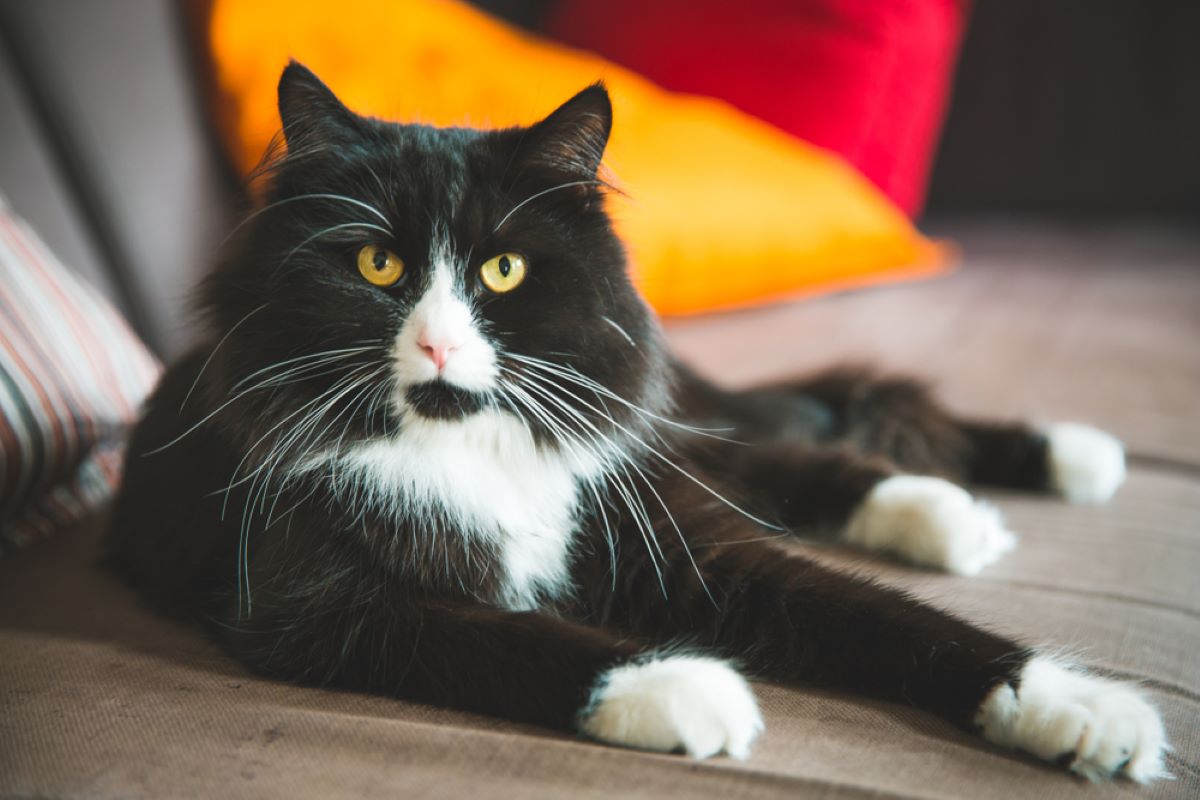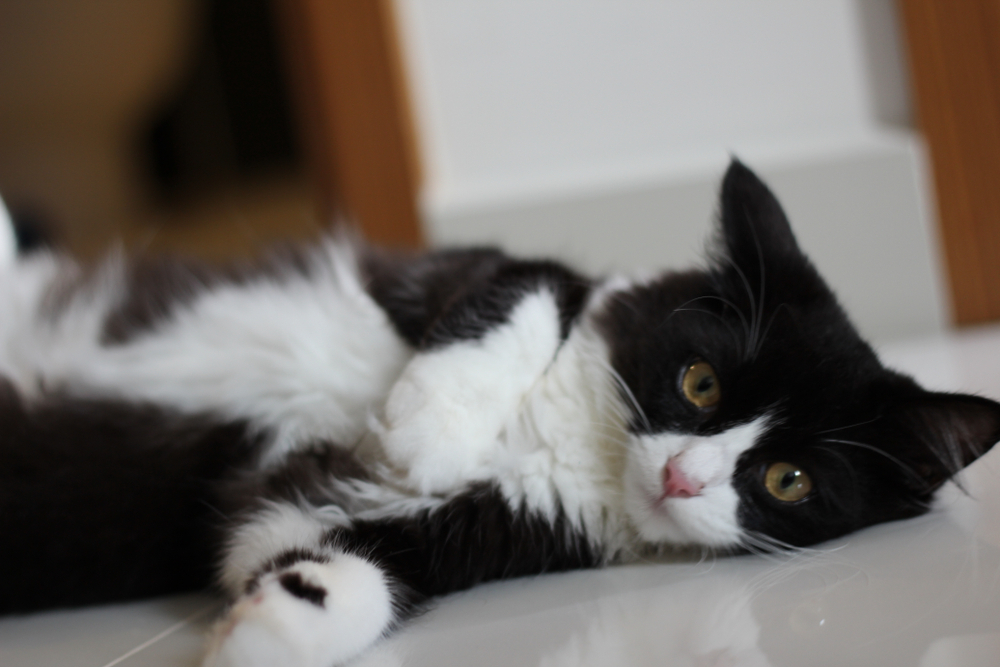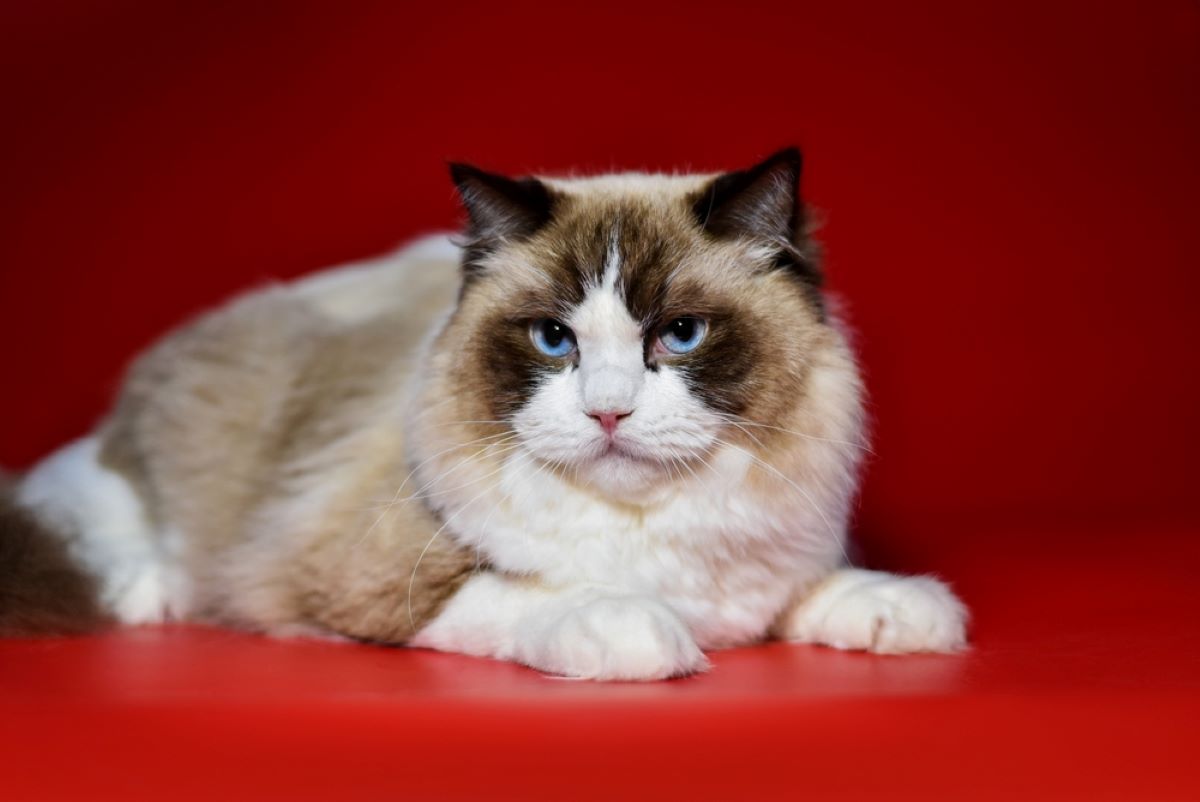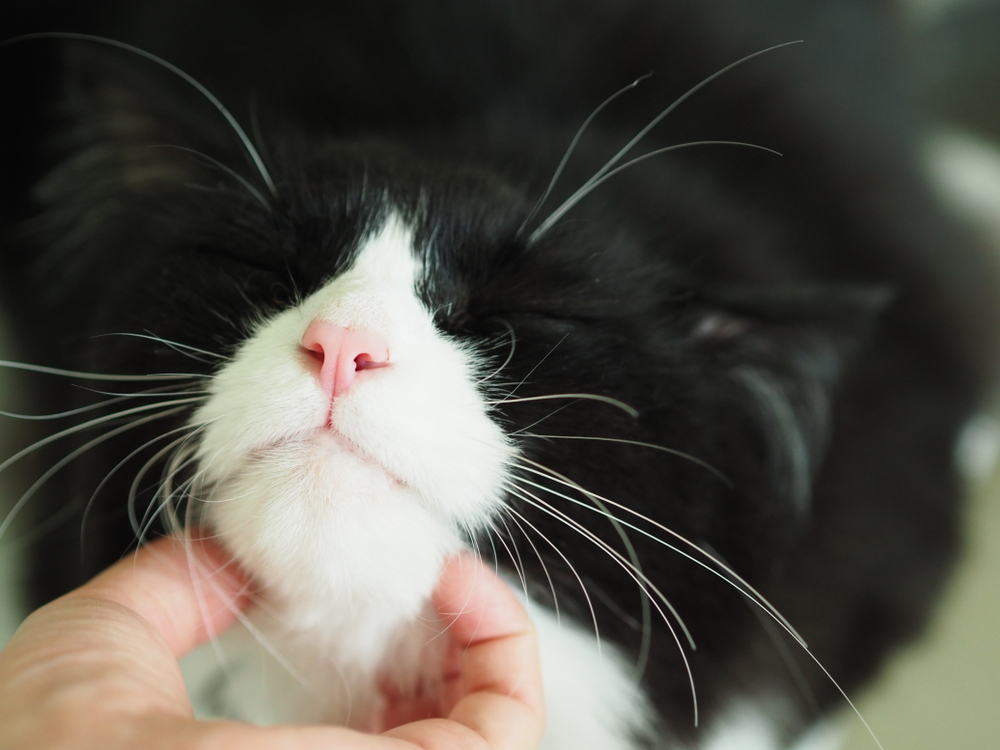📖 Table of Content:
“Do tuxedo Ragdoll cats even exist?!”
Now, that’s a question that plagues every Ragdoll pet parent out there. Ragdolls are the purrfect pets, which happens to be the reason why many pet parents decide to get another one, and then another one. Rather than experimenting with other breeds, Ragdoll pet parents prefer experimenting with colors and patterns.
As you might have guessed, one of those color combinations might be a black and white Ragdoll, a bicolor, a piebald, a tuxedo, or whichever nickname you prefer to give them. At the end of the day, who wouldn’t want to bring another affectionate, appreciative, and adorable fluffer to the family?!
Ragdolls carry their name because they become limp like ragdolls when you pick them up. They’re the cuddliest, cutest pets out there and we couldn’t be more excited about the thought of one wearing a little black and white tuxedo.
Not to mention that they’re one of the most desired and coveted pets ever, with the Cat Fanciers’ Association (CFA) naming them the most popular cat breed in the world in 2021.
Needless to say, the people have spoken. On the chance that a tuxedo Ragdoll cat would be a dream come true for you, keep on reading to uncover everything you need to know about these mysterious moggies.
What are tuxedo cats?
Before we tackle the tuxedo Ragdoll cats, we need to address the elephant in the room – what are tuxedo cats? What makes a coat color combination a tuxedo? How are tuxedo cats different from average cats? Also, are tuxedo cats rare?
Right off the bat, tuxedo cats are known and adored because of the signature tuxedo markings that make them look like little gentlemen. Tuxedo cats, or tuxies, are predominately black and white, but they’re known to assume an array of color combinations, from gray and silver to orange and tortoiseshell.
Truth be told, not many pet parents know that Tom, from Tom & Jerry, was a tuxedo cat. Furthermore, you might have heard of Felix the Cat, Sylvester the Cat, or The Cat in the Hat, all of which were tuxedo cats, too. That’s the thing, though – tuxedo cats are much more than good looks and flawless fashion taste.
Can Ragdoll cats wear the tuxedo, too?
When you turn to Google to check whether tuxedo Ragdoll cats are a thing, you might be taken aback by “Ragdoll cats don’t have the tuxedo pattern” and “tuxedo Ragdolls don’t exist” answers. Not to worry, there’s a reason why people seem to think that black and white Ragdoll cats aren’t tuxedo cats.
To ease your worries, Ragdoll cats are known to sport unique bicolor coats from time to time.
Tuxedo Ragdoll cats aren’t known to everyone because they’re relatively rare and they didn’t even exist before Ann Baker created the Ragdoll breed around the 1960s. Tuxedo Ragdolls are genetic, though, and they’re not a consequence of selective breeding.
Here’s the thing that throws everyone off – tuxedo Ragdoll cats aren’t accepted and recognized as purebred by the International Cat Association or the Cat Fanciers Association.
Sure, that doesn’t take away from the beauty of the breed. But, that does mean that you can’t get the “certificate of authenticity” from the breeder and you can’t enter cat shows and competitions.
What are the official Ragdoll cat colors and patterns?
Who needs cat shows, anyways? Ragdoll cats are big, beautiful cats that are friendly, easy-going, and fun-loving regardless of their coat color.
Rather than being “couch potatoes,” Ragdolls are perfect for families because they’re great around humans, little humans, and even dogs. Whether they’re cuddling, running around, or playing, these frisky felines adore hanging out with pretty much anyone.
Yes, we are trying to answer your questions about tuxedo Ragdolls, which means we do need to tackle color combinations and patterns that are accepted and recognized as purebred by the International Cat Association or the Cat Fanciers Association.
Buckle up because you’re about to meet every Ragdoll coat color ever!
First off, there are 6 main point colors (seal, chocolate, blue, lilac, red, and cream) which can be solid or combined with numerous shadings, markings, and patterns. For every color to be accepted and recognized, Ragdolls need to have them clearly defined along the areas of the face, ears, tail, legs, and feet.
With that in mind, there are 20 types of Ragdoll cat colors and color combinations. We can’t forget about the patterns, though. Ragdolls are seldom a solid color because they’re embellished with the same pattern that consists of two to three colors, whether they’re bicolor, colorpoint, mitted, or van.
Tuxedo Ragdoll cats, as you might have gathered, are bicolor because they’re adorned with black and white markings.
When did tuxedo Ragdoll cats appear?
Now, tuxedo cats have been around for ages and are thought to have appeared around the area of ancient Egypt, before tuxedos were even a thing. Not to burst your bubble, but tuxedo cats are referred to that way by none other than Americans – the rest of the world knows them as black and white cats.
Myths suggest that tuxedo cats were adored and worshipped by the ancient Egyptians, with numerous carvings on Egyptian tombs dating back to the time of the Pharaohs attesting to that fact.
However, we do need to underline that nobody knows whether or not these myths were fabricated to make tuxedo cats more popular.
Whatever the case might be, tuxedo Ragdoll cats didn’t appear before the 1960s, when Ann Bakers started the process of breeding affectionate, appreciative, and non-aggressive family pets. While the first Ragdolls weren’t wearing tuxedos, that changed pretty quickly.
We already brushed over the fact that tuxedos weren’t a product of selective breeding, which means that Ann didn’t have much to do with the first tuxedo Ragdolls. Whoever was to blame for the fluffiest gentlemen out there – we salute you!



